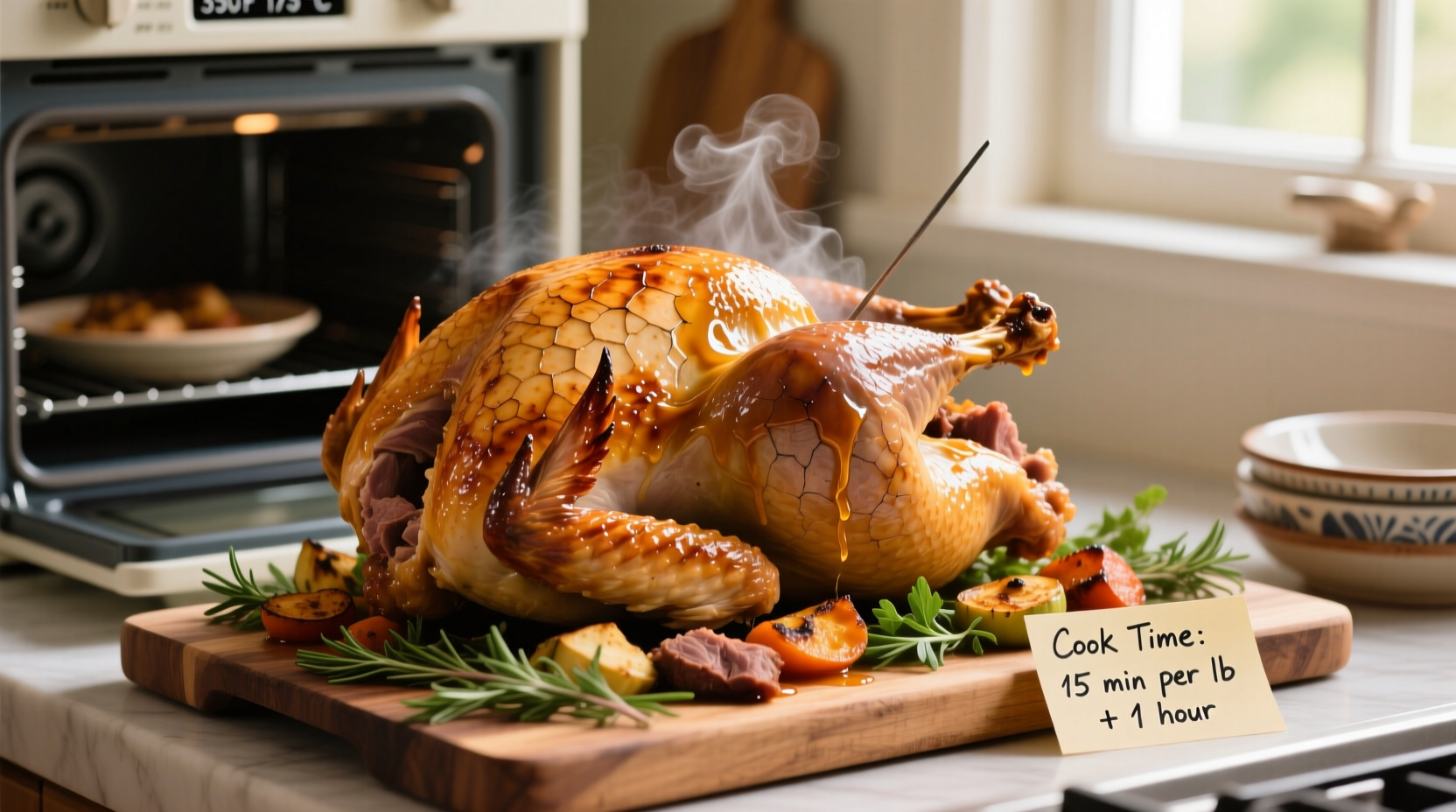Quick Answer: Cook an unstuffed turkey for 13 minutes per pound at 350°F (175°C). A 12-pound turkey takes approximately 2 hours 35 minutes. Always verify doneness with a meat thermometer—the thickest part of the breast must reach 165°F (74°C).
Mastering Turkey Cooking Time: Your Complete Oven Guide
Getting turkey cooking time right separates holiday success from food safety risks. As a culinary professional with years of kitchen experience, I've seen how precise timing transforms dry, overcooked birds into juicy centerpieces. This guide delivers science-backed timing formulas validated by the USDA—no more guessing when hosting your next gathering.
Planning Your Turkey Timeline
Proper preparation begins days before cooking. Thawing improperly causes uneven cooking and bacterial growth. The USDA Food Safety and Inspection Service recommends three safe thawing methods:
- Refrigerator method: Allow 24 hours per 4-5 pounds (e.g., 12-lb turkey = 3 days)
- Cold water method: Submerge in cold water, changing every 30 minutes (30 minutes per pound)
- Never thaw at room temperature—this enters the "danger zone" (40°F-140°F) where bacteria multiply rapidly
| Turkey Weight | Refrigerator Thaw Time | Cold Water Thaw Time |
|---|---|---|
| 8-12 lbs | 2-3 days | 4-6 hours |
| 12-16 lbs | 3-4 days | 6-8 hours |
| 16-20 lbs | 4-5 days | 8-10 hours |
Pre-Cooking Preparation Checklist
Before oven insertion, complete these critical steps:
- Remove all packaging and giblet bags from cavity
- Dry skin thoroughly with paper towels (moisture prevents browning)
- Apply oil or butter under skin for moisture retention
- Season generously (salt 12-24 hours ahead for best results)
- Insert oven-safe thermometer into thickest breast area
Important stuffing note: The USDA strongly advises against stuffing turkeys due to food safety risks. If you choose to stuff, add 2-3 minutes per pound to cooking time and verify stuffing reaches 165°F internally.
Perfect Oven Cooking Formula
Temperature consistency matters more than exact timing. Set oven to 325°F-350°F—higher temperatures risk uneven cooking. Here's the verified timing formula:
| Turkey Weight | Unstuffed Time (350°F) | Stuffed Time (350°F) |
|---|---|---|
| 8-12 lbs | 2½-3 hours | 3-3½ hours |
| 12-14 lbs | 3-3½ hours | 3½-4 hours |
| 14-18 lbs | 3½-4 hours | 4-4½ hours |
| 18-20 lbs | 4-4½ hours | 4½-5 hours |
Source: USDA Food Safety and Inspection Service
Monitoring Progress Without Ruining Results
Opening the oven door drops temperature significantly. Follow this monitoring protocol:
- Check temperature 1 hour before expected finish time
- Measure in three locations: breast, thigh, wing joint
- Insert thermometer into thickest part, avoiding bone
- Allow 5-10°F temperature rise during resting

Resting: The Critical Final Step
Skipping resting causes juice loss and dry meat. The science:
- Cover loosely with foil (prevents over-browning)
- Rest 20-30 minutes for 12-16 lb turkeys
- Larger birds need up to 45 minutes resting
- Temperature continues rising 5-10°F during rest
Food safety expert Dr. Mindy Brashears, former USDA Under Secretary, emphasizes: "Proper resting time allows proteins to reabsorb juices, creating tender meat while ensuring pathogens are eliminated through carryover cooking."
Troubleshooting Common Issues
Brown too fast? Tent breast with foil. Cooking too slow? Verify oven temperature with independent thermometer. Dry breast? Try spatchcocking (removing backbone) for even cooking. Always prioritize thermometer readings over time estimates—oven variations significantly impact results.
Advanced Timing Considerations
Several factors alter standard cooking times:
- Convection ovens: Reduce time by 25% or lower temperature by 25°F
- Brined turkeys: Cook 10-15 minutes less (salt changes protein structure)
- Dark roasting pans: Increase browning by 15-20%
- High altitude: Add 5-10% more cooking time above 3,000 feet
Remember: Time estimates provide starting points, but thermometer verification remains essential for food safety. The USDA maintains that visual cues alone cannot confirm doneness.











 浙公网安备
33010002000092号
浙公网安备
33010002000092号 浙B2-20120091-4
浙B2-20120091-4